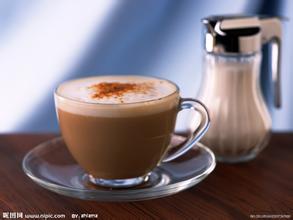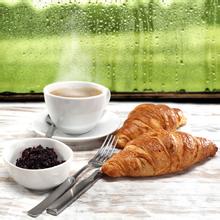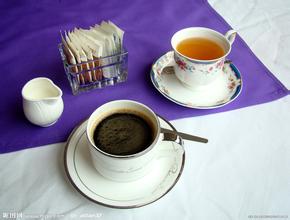The Grinding scale of Coffee beans from Crystal Mountain in Cuba
In addition to Cuba, it includes more than 1600 surrounding islands of varying sizes. The islands consist of five archipelagos: Savannah, Camaguey, Colorado, Queen's Garden and Canares. Youth Island (also known as Pine Island), located in Batavano Bay, is the only large island off the coast. The coastline is 6073 km long. Most of the island is flat, with mountains accounting for only a quarter of the total area. There are three major mountain ranges in Cuba: the Guaniguanico Mountains, the Escambray Mountains, and the Maestra Mountains (the highest mountain range in Cuba, of which Turkino Peak is the highest peak in Cuba at 1974 meters above sea level).
Cubita is produced from the uncontaminated coffee of Crystal Mountain, a high-altitude area of Cuba. Crystal Mountain is geographically adjacent to the Blue Mountains of Jamaica and has similar climatic conditions, which can rival Jamaica Blue Mountain coffee. Crystal Mountain is also known as the "Blue Mountain of Cuba." Therefore, there are many brands of coffee under the Cuban Blue Mountain banner, but the purest Crystal Mountain Coffee Cubita is the top coffee allowed to use Cuba's "Crystal Mountain Coffee" and has become the designated coffee for the Cuban Embassy. Currently, Crystal Mountain Coffee is synonymous with premium Cuban coffee.
Cubita adheres to the principle of perfect coffee, only single coffee, coffee beans picking, hand completed, coffee beans particles are strictly selected according to the standard of sieve 17-19, plus washing coffee beans, to a large extent to remove defective beans and other impurities, to ensure the quality of coffee. It has a high reputation in the coffee industry. Careful people will find that Cubita is also unique from other coffees. Cubita is not bitter like espresso coffee, like chivalrous style; not arrogant like blue mountain coffee, like imperial feeling. However, Cubita is like an elegant princess, with a feminine natural tenderness, nobility, tenderness and elegance. Excellent balance, bitterness and sourness are well matched, and there will be a delicate, smooth, refreshing and elegant feeling when tasting. It is the best enjoyment in coffee.
Coffee was introduced to Cuba from Domica in 1748, and Cuba has since grown coffee. The fertile soil, humid climate and abundant rainfall in Cuba make it a natural treasure for coffee cultivation. Suitable natural conditions provide a favorable natural environment for the growth of coffee trees, where coffee is well planted and developed. In Cuba, coffee cultivation is regulated by the State. Cuba's best coffee-growing areas are located in the Central Mountains. Because this area is not only planted with coffee, but also produces precious minerals such as quartz and crystal, it is also known as Crystal Mountain. At present, Crystal Mountain Coffee is synonymous with premium Cuban coffee.
Coffee was introduced to Cuba from Domica in 1748, and Cuba has since grown coffee. The fertile soil, humid climate and abundant rainfall in Cuba make it a natural treasure for coffee cultivation. Suitable natural conditions provide a favorable natural environment for the growth of coffee trees, where coffee is well planted and developed. In Cuba, coffee cultivation is regulated by the State. Cuba's best coffee-growing areas are located in the Central Mountains. Because this area is not only planted with coffee, but also produces precious minerals such as quartz and crystal, it is also known as Crystal Mountain. Currently, Crystal Mountain Coffee is synonymous with premium Cuban coffee.
In Cuba, coffee beans are mostly picked by hand. During the ripening period of coffee beans, they are picked about once every half month. During or after picking, coffee beans are sorted to eliminate immature and bad beans to ensure coffee quality. Cubans usually treat coffee beans in two ways--sun and water. Solarization is the simplest, cheapest, and most traditional way to treat coffee. It involves drying the coffee fruit in the sun, but not fermenting it. The average drying time is about four weeks. The washing law allows more fruit aromas to enter the coffee beans, adding a coarse mineral fruit aroma to the coffee.

Important Notice :
前街咖啡 FrontStreet Coffee has moved to new addredd:
FrontStreet Coffee Address: 315,Donghua East Road,GuangZhou
Tel:020 38364473
- Prev

Introduction to taste treatment of brand flavor description in graded production area of Peruvian coffee beans
Peru's finest coffee is produced in Chaximayo, Cusco, Note and Puno. Most Peruvian coffee is grown under natural conditions, but it is also difficult to confirm the cultivation of all coffee trees. Coffee grown under natural conditions costs 10% more than others and is exported to the United States and Japan. The quality of Peruvian coffee is comparable to that of any kind of coffee in Central or South America. Peru
- Next

Introduction to the description of Manor Flavor of characteristic varieties of El Salvador Coffee beans
Salvadoran coffee ranks side by side with Mexico and Guatemala as the producers of Asa and Merdo, and is fighting for the top one or two places in China and the United States with other countries. The highlands of origin are large coffee beans of all sizes, which are fragrant and mild in taste. Like Guatemala and Costa Rica, coffee in El Salvador is graded according to altitude, and the higher the altitude, the better the coffee
Related
- Detailed explanation of Jadeite planting Land in Panamanian Jadeite Manor introduction to the grading system of Jadeite competitive bidding, Red bid, Green bid and Rose Summer
- Story of Coffee planting in Brenka region of Costa Rica Stonehenge Manor anaerobic heavy honey treatment of flavor mouth
- What's on the barrel of Blue Mountain Coffee beans?
- Can American coffee also pull flowers? How to use hot American style to pull out a good-looking pattern?
- Can you make a cold extract with coffee beans? What is the right proportion for cold-extracted coffee formula?
- Indonesian PWN Gold Mandrine Coffee Origin Features Flavor How to Chong? Mandolin coffee is American.
- A brief introduction to the flavor characteristics of Brazilian yellow bourbon coffee beans
- What is the effect of different water quality on the flavor of cold-extracted coffee? What kind of water is best for brewing coffee?
- Why do you think of Rose Summer whenever you mention Panamanian coffee?
- Introduction to the characteristics of authentic blue mountain coffee bean producing areas? What is the CIB Coffee Authority in Jamaica?

